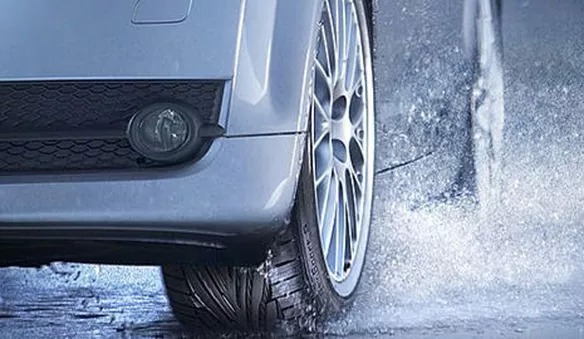These days of rain or forecast of precipitations in Dénia and in the area of Marina Alta, it is important to check the pressure and the depth of the drawing of the tires as well as the state of the brushes and the air diffusers of the windshield.
Here are some tips that you should take into account
- We will pay special attention during the first drops of rain fallen. The accumulation of dust and grease of vehicles on the road causes a layer of very slippery dirt to form with the first drops.
- With wet road tires lose grip increasing the distance needed to brake, so we will reduce the speed and increase the safety distance. We will always brake gently to avoid a possible blockage of the wheels.
- Wet brakes can also lose effectiveness, especially when passing through areas with significant accumulations of water. To favor the drying of the brake system we will make a short and repeated pulsations to the pedal.
- We will carry out a correct ventilation of the cabin and we will use the thermal rear window to prevent the windows from fogging up.
- When the visibility produced by the rain decreases, we will use the dipped beam and, if necessary, the fog lights.
- Driving with rain is more demanding and tiresome for the driver, so we will make rest stops more frequently.
Aquaplaning
One of the most dangerous effects produced by rain is known as aquaplaning. It can occur when traveling at a certain speed along sections of the road that show water accumulation.
The function of the drawing of the tires is to expel the water towards the sides of the wheel, thus clearing the rolling area that is the one that provides adherence to the vehicle. When the drawing of the tire is not able to evacuate the accumulated amount of water, the tire loses contact with the pavement and slips on the water, causing the driver to lose control of the vehicle.
The appearance of the aquaplaning effect will depend on the ability to evacuate water from the tires, which is measured in liters per second, and the speed at which we circulate. At higher speeds, the time the tires will have to evacuate the water from the roadway will be less, increasing the probability of aquaplaning.
Comparison of winter tires.
Winter tires are advisable when the thermometer is below 7 degrees because they get more grip on the ground and significantly reduce braking distance, especially with snow, ice and rain.
The best way to prevent aquaplaning is to moderate the speed.


Recent Comments